Innovation-driven Engineering
Engineered for the Future, Designed for Today
Pioneering AI/ML solutions, cloud engineering, and modern user experiences to transform how enterprises operate, innovate, and grow.
Our Engineering Core Principles
At Ramco, we're guided by these engineering principles that shape how we build and deliver products
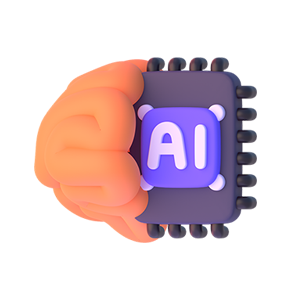
AI-Driven Intelligence
We harness the power of Artificial Intelligence and Machine Learning to automate processes, drive insights, and deliver predictive outcomes across the enterprise.
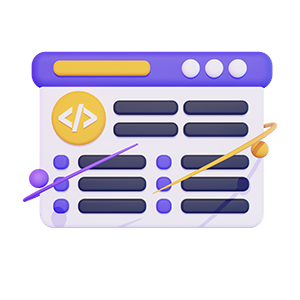
Composable Architecture
Our platforms follow a modular, API-first approach, enabling agile deployment, seamless integration, and scalable innovation—tailored to changing business needs.
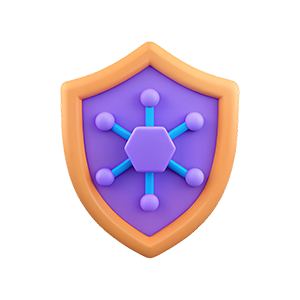
DevSecOps Culture
Security is not a checkpoint—it’s continuous. Our DevSecOps model embeds security into every phase of the software lifecycle, enabling safe and rapid delivery.

Cloud-Native & Resilient
Built for the cloud, our systems are elastic, resilient, and self-healing—ensuring high availability, global scalability, and fast disaster recovery.
Featured Articles
From Pixels to Prompts: How a Decade of Design Taught Me That AI Can’t Replace Creativity, Curiosity and Empathy
Let’s be honest — AI is the word of the year. Everywhere you look, it’s the same buzz: “AI is going to take our jobs.
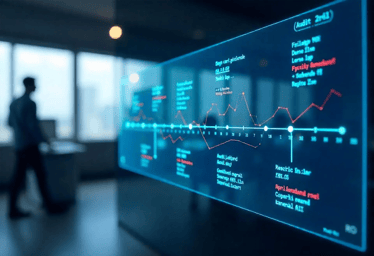
Scalable and Searchable Audit Trail with Elasticsearch: Ramco’s Modernized Approach
In an era where auditability, transparency, and compliance are critical, Ramco is modernizing its systems with a scalable and intelligent audit trail architecture.
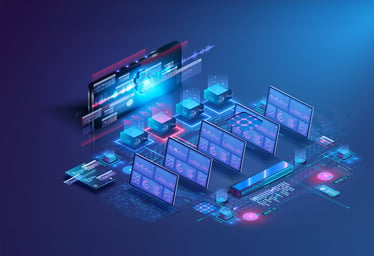
Modernizing Bulk Processing
Ramco Applications had the challenge of processing for high volume wherein the processing time was high and had the limitation of processing only one at a time as the entire logic and processing was happening in the database layer.
Scalability
Elevating Enterprise Communication: The Power of a Centralized Notification Service
Anand Lazarus
Jun 6, 2025
4 min read

In today's fast-paced enterprise landscape, effective communication is paramount. From critical system alerts to routine approvals, the ability to deliver timely and relevant information directly impacts operational efficiency and user satisfaction. At Ramco Systems, we're building a robust platform designed to accelerate product development, and a cornerstone of this platform is our powerful and versatile Notification Service.
This blog post will explore the critical role of Notification Service within the broader platform, specifically highlighting its impact on Human Resources and Payroll (HRP) applications. We'll delve into its design, capabilities, and how it empowers businesses to communicate seamlessly across diverse channels.
Introduction to the Notification Service
The Notification Service is more than just a messaging tool; it's the central hub for all outbound communications originating from applications built on our platform. In the context of enterprise software, its importance cannot be overstated. Implementing it as a standalone service within our platform offers significant advantages:
- Decoupling and Scalability: By separating concerns, the Notification Service can be developed, deployed, and scaled independently of other platform services. This ensures that even during peak communication demands, other services remain performant.
- Centralized Management and Consistency: All notification logic, templates, and provider configurations are managed in one place. This ensures consistent branding, messaging, and compliance across all applications leveraging the platform, reducing development effort and potential errors.
- Channel Agnosticism: The service handles the complexities of various communication channels (Email, SMS, WhatsApp, Mobile Push). Applications simply send a notification request, and the service intelligently routes it to the appropriate channel based on user preferences and configuration.
- Reusability and Accelerate Development: Once developed, the Notification Service can be easily integrated into any new or existing product built on our platform, like ERP, Aviation, or Logistics. This significantly reduces time-to-market for applications requiring communication capabilities.
- Enhanced Monitoring and Analytics: A centralized service allows for comprehensive monitoring of notification delivery, engagement, and potential issues, providing valuable insights for optimization and improvement.
Requirements and Goals of the Notification Service
Our Notification Service is designed with a clear set of requirements and goals in mind, addressing the diverse needs of enterprise applications:
- Multi-Channel Support: Ability to send notifications via Email, SMS, WhatsApp, and Mobile Push, with seamless integration with various third-party providers for each channel.
- Template-Driven Communication: Empowering functional consultants to design and manage dynamic notification templates with placeholders for personalized content.
- Real-time and Batch Processing: Support for both immediate notification delivery (e.g., for approval requests) and scheduled batch notifications (e.g., daily reports).
- Robust Delivery Guarantees and Retries: Mechanisms to ensure high deliverability rates, including retry logic for failed notifications.
- Auditing and Reporting: Comprehensive logging of all notification activities for audit trails and detailed reporting on usage, delivery status, and potential issues.
- Security and Compliance: Adherence to enterprise-grade security standards and data privacy regulations.
- Scalability and Performance: Capable of handling a high volume of notification requests with low latency.
High-Level Design Approach: An Event-Driven System
To meet these demanding requirements, Notification Service adopts a modern, event-driven architecture. This approach ensures high availability, scalability, and resilience.
- Event-Driven Architecture with Kafka: When a business event occurs in an application (e.g., a leave request submitted in HRP), the application publishes a notification request event to a dedicated Kafka topic. Kafka acts as a highly scalable, fault-tolerant message broker that decouples the producing applications from the Notification Service. This asynchronous communication pattern decouples the sender from the receiver, improving system responsiveness and fault tolerance. Kafka's inherent scalability allows us to handle vast amounts of notification traffic.
- Notification Service Core: This is the heart of the system. It consumes notification request events from Kafka. Upon receiving a request, it performs several actions:
- Template Retrieval: It fetches the appropriate notification template (based on the event type and other metadata) from its template repository.
- Data Enrichment: It populates the placeholders in the template with the actual data provided in the event.
- Channel & Provider Selection: Based on the template configuration or rules, it determines the channel (Email, SMS, etc.) and the specific provider to use.
- Dispatching: It then sends the formatted notification via the selected channel and provider. Ensure the transient failed notifications are retried for the given TTL or max retries.
- Logging & Tracking: It logs the status of each notification for auditing and reporting purposes.
- MongoDB for Data Storage: MongoDB, a NoSQL document database, is chosen for its flexibility and scalability, making it ideal for storing:
- Notification Templates: Storing complex, dynamic templates with rich formatting options are well-suited to MongoDB's document model.
- Configuration Data: Channel configurations, provider details, and other service settings.
- Notification Metadata: Historical data about each sent notification, including its content, channel, recipient, and status. This data is crucial for reporting and auditing.
This event-driven architecture ensures that even if the Notification Service experiences a temporary slowdown, the producing applications can continue to publish requests to Kafka without interruption. The service will catch up once it's back to full capacity.

User Interface: Empowering Functional Consultants and Business Users
A powerful service is only truly effective when it's easily accessible and manageable. The Notification Service provides intuitive APIs and User Interfaces designed to empower both technical and functional users:
- Template Designer: A user-friendly interface that allows functional consultants to:
- Create and manage notification templates using a rich text editor.
- Define placeholders for dynamic data insertion (e.g., , ).
- Preview templates with sample data to ensure accuracy and visual appeal.
- Manage template versions and language variations.
- Channel and Provider Configuration: A dedicated module for configuring and managing various communication channels and their respective providers:
- Onboarding and configuring Email (e.g., SMTP, SendGrid), SMS (e.g., Twilio, Plivo), WhatsApp Business API, and Mobile Push (e.g., Firebase Cloud Messaging, Apple Push Notification Service) providers.
- Setting up authentication credentials and channel-specific parameters.
- Enabling/disabling channels based on business needs.
- Dashboard and Reports: A comprehensive dashboard provides critical insights into notification usage and performance:
- Notification Volume: Overview of notifications sent across all channels over time.
- Delivery Success Rates: Detailed reports on successful, failed, and pending notifications.
- Channel Usage: Breakdown of notifications sent per channel.
- Error Analysis: Identification of common notification delivery errors and potential root causes.
- Usage Analytics: Data on which applications are leveraging the Notification Service most, helping prioritize future enhancements.
- These reports empower business users and IT operations to monitor the health and effectiveness of communication within their applications.
Conclusion
The Notification Service is more than just a feature; it's a strategic asset that empowers our platform and the products built upon it – from HRP to ERP, Logistics and Aviation – to deliver timely and relevant information seamlessly. By providing a centralized, scalable, and multi-channel communication engine. As we integrate the Notification Service across all our enterprise applications, we anticipate significant improvements in workflow automation, user satisfaction, and operational awareness fostering seamless communication and driving operational excellence across the enterprise.

Anand Lazarus
Associate Director-Technology
Experienced with a demonstrated history of working in the IT and Services industry. Skilled in C#, .NET, Web API, Microservices, Azure, Kubernetes and Istio. Strong engineering professional with a Master of Science focused on Software Systems from BITS Pilani, India.
Share this article
Shape the Future with Ramco
We're looking for passionate individuals to join our growing team. Explore opportunities that allow you to make an impact and grow your career in a supportive environment.
View All Open Positions



